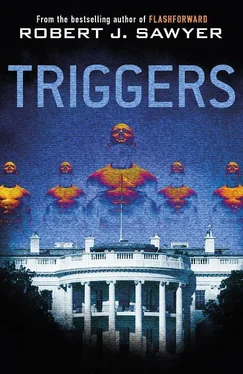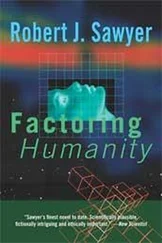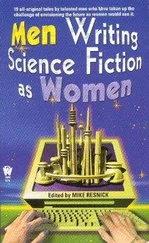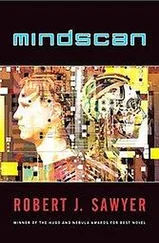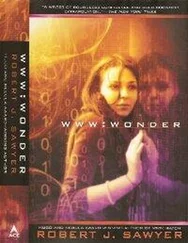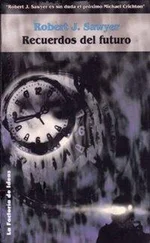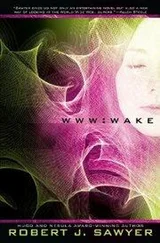The shadow of the monument gradually shortened as the new day continued to dawn.
Susan Dawson soon realized what Seth Jerrison already had: links were now forming spontaneously, without physical contact. As she looked at Vice President Flaherty, his memories opened up to her, and as she looked at Seth Jerrison, he, too, became an open book. She lowered her weapon; there was no point any longer in keeping the two of them apart.
Soon, everyone at Camp David ended up with their memories intertwined. But even the linked had to sleep, and although some few managed to stay up all night, dealing with the flood of media inquiries after Jerrison’s aborted attempt to address the nation, most had nodded off by midnight. The president, of course, had been through an enormous trauma. Bessie Stilwell normally didn’t need much sleep, but the round-trip to California had left her fatigued. Ranjip Singh never managed to rally much strength that night, and was out cold by 1:00 A.M., and Darryl Hudkins was asleep by 2:00.
Susan did manage to stay up all night, sitting in her wheelchair, but she knew it was pointless: the vast majority of those in DC, in Maryland, and in Virginia were asleep, and although that didn’t impede accessing the memories of those who were already linked, those who were unconscious couldn’t reach out to others.
The infirmary had a big window that happened to look east. Although the view was partially obscured by trees, Susan was nonetheless drawn by the rising sun. A memory came to her of a sunrise over the Taj Mahal—seen by Ranjip Singh on one of his trips to India.
Another sunrise came to her, one familiar and yet alien. Familiar, because it was a view through the windows in the East Wing of the White House, looking across East Executive Avenue toward the Treasury Department—a window she’d often enough looked out herself. But alien because she’d never looked out those windows at dawn, and—ah, more of the memory came to her: and certainly not with the First Lady standing next to…to him. It was the morning after their first night in the White House, and Seth Jerrison and his wife had come here to watch the day break.
Ranjip Singh was waking up—they’d eased him onto one of the infirmary beds. The sleep had done him good, it seemed: he was capable of speech again. He looked at Susan, and the first words out of his mouth were, “You can read President Jerrison’s memories.”
“Yes.”
He sounded amazed. “I can recall you recalling him recalling a wonderful sunrise seen from the White House.”
Susan nodded. “The beginning of his first full day in office. Yes, it just came to me.”
“This is…is…”
“ ‘Major league,’ as your son would say,” said Susan.
Singh smiled. “That it is.”
Darryl Hudkins was lying on one of the other infirmary beds. His eyes fluttered open. “Good morning, Miss Susan,” he said, softly, looking at her. But Darryl never called her that; in fact, the only person who’d called her that recently was…
Bessie Stilwell.
Susan found she no longer needed the wheelchair. She rose from it and walked over to him. “Bessie?” she said, looking into Darryl’s brown eyes.
“Yes, dear?” he—or she—replied.
Susan swallowed. “Bessie, where’s Darryl?”
“Darryl? Such a nice young…young man.” A frown. “I don’t know. I haven’t seen him.”
Susan called over her shoulder. “Ranjip! Ranjip!”
He hopped off the bed and joined her. “What?”
She gestured at Darryl. “His body is awake, but it’s as if Bessie is answering my questions.”
Singh looked at Darryl. “Agent Hudkins?”
“Yes?” said a voice.
“And Mrs. Stilwell?”
“Yes?” said the same voice.
Seth Jerrison woke next, sitting up straight in his wheelchair. His eyes seemed alert.
“Mr. President,” Susan asked, “are you all right?”
“No,” he said. “No, it’s—it’s like when I was dying. I feel distant from my body.”
Dr. Snow must have rallied at some point, because she soon appeared at his side. “Sir, you’re here at Camp David, in the infirmary. You’re here. Is there any pain?”
That seemed to be the wrong question. Suddenly, Jerrison’s eyes went wide and his mouth dropped open and he let out a grunt as if he’d been punched in the stomach—or shot in the back.
“Damn,” said Snow, under her breath. “Sir, it’s all right. It’s all right.”
But it wasn’t. Susan suddenly felt a sharp pain in her chest, too. The sight of Jerrison echoing what had happened on the steps of the Lincoln Memorial was triggering her to access that memory, too. And the pain of being shot brought back the different pain of having shot—the shock and nausea she’d felt after gunning down Josh Latimer.
Perhaps in response to the pain, her consciousness fled. She was suddenly in a fancy apartment somewhere, and there was a woman she recognized: Janis Falconi—which meant she perhaps was in the mind of Dr. Redekop. She tried to speak, but before the words could get out she was somewhere else yet again, outdoors, in the cold, brushing snow off a car.
And then her vision split in two, as if her left eye were in one place and her right another. The left showed an outdoor scene—the sun rising above some more trees that had lost their leaves for the winter. And the right showed an interior of someone’s house, with beat-up furniture and piles of old newspapers. But there was no harsh line between the two realities, no clear demarcation. She could contemplate either or—yes!— both simultaneously. And each object in each scene triggered memories: a cavalcade of images and sensations and feelings.
And then Susan’s vision seemed to split horizontally, showing her four images: the original two in the top quadrants, a view through a car’s windshield driving on a highway in the lower left, and a bouncing view of a TV set in the lower right that she soon realized was the perspective of someone watching a morning news show while treadmilling.
The images split again, each quadrant dividing into four smaller views, for a total of sixteen. She felt like she was equally in all those places, indoors and out, warm and cold.
She turned her head—at least, she thought she was turning it—and the views shifted, revealing new squares to the left; and as she tilted her head up and down, more squares appeared above and below.
All the images split again; each one was now quite small, and yet, despite that, there was absolute clarity. After a moment, they divided yet again—and her whole field of view was filled with hundreds of squares. But despite their small size, she could make out minute details: reading a headline on that commuter’s newspaper; admiring the engagement ring on that woman’s finger; seeing the time on the clock in this one—and the clock on that one—and the watch on this one—and the iPhone display on that one. And they all said the same time: 7:32 A.M., which was now. It wasn’t just in times of crisis anymore; she was reading minds in real time. Lots of minds.
She was still Susan Louise Dawson—but she was also all those other people. She was white and black and Asian. Female and male. Straight and gay. Christian and Jewish and Sikh and Muslim and atheist. Young and old. Fit and not. Brilliant, average, and dull. Both a believer and a skeptic; at once a scientific genius and a scientific illiterate.
She tried to assert her individuality: she was…was…
No, surely she was still…
But it was getting harder to stay separate. All the elements of who she was were still there, but they were juxtaposed with components of other minds, other lives. And she was a smaller part of the whole with each passing second.
Читать дальше
